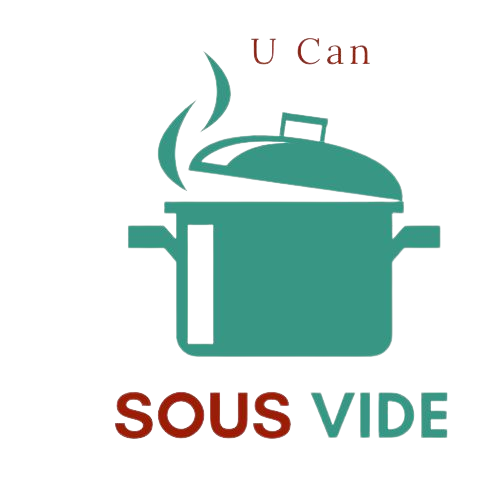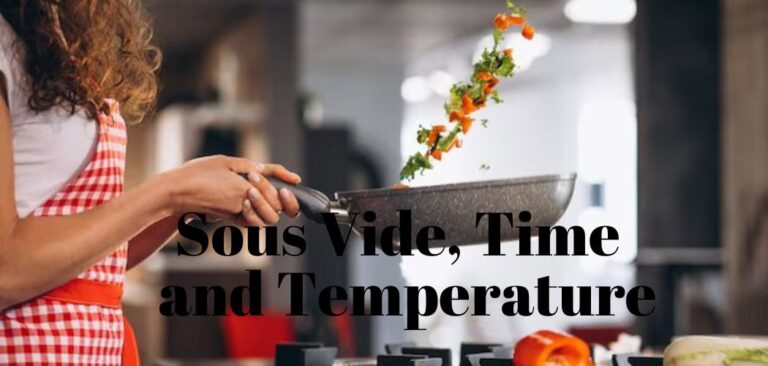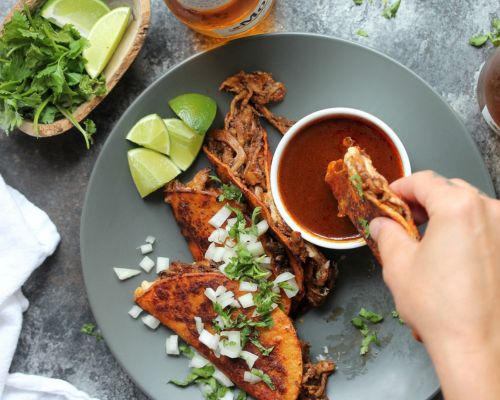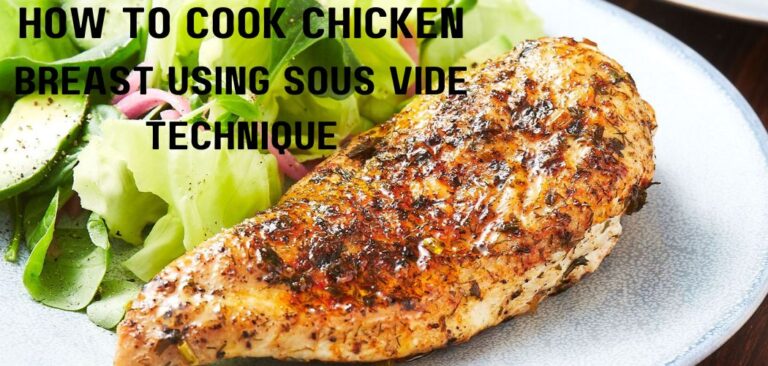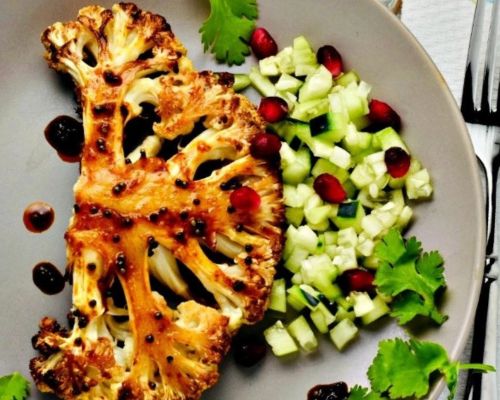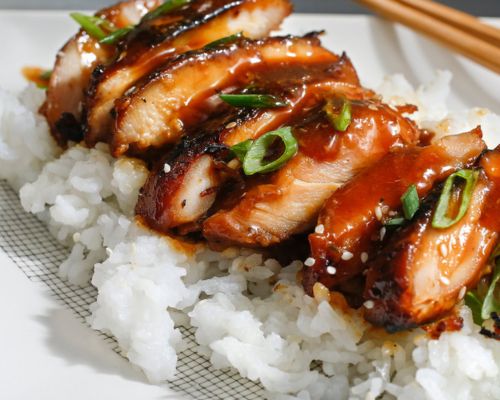Sous vide cooking has been gaining popularity in recent years, and for good reason. Not only is it a great way to cook meats and vegetables to perfection, but it also offers a unique solution for reheating leftovers. One of the key benefits of sous vide is its precise temperature control, which allows you to reheat food to the exact temperature you desire without overcooking or drying it out. In this blog post, we’ll explore the re-heating time of various foods using sous vide and why it’s the perfect method for bringing leftovers back to life. Whether you’re a sous vide pro or just getting started, you won’t want to miss these tips and tricks for reheating your favorite dishes.
Benefits Of Reheating Food Using Sous Vide
Precision
You can precision cook meat to the perfect temperature without drying it out or overcooking it. This is because when you reheat food using the sous vide method, you are essentially cooking it at a low temperature for a longer period of time.
Retain Flavors
Sous vide reheated food will retain its moisture and flavor better than food reheated using other methods. This is because the slow-cooking process allows the food to retain its natural juices and flavors.
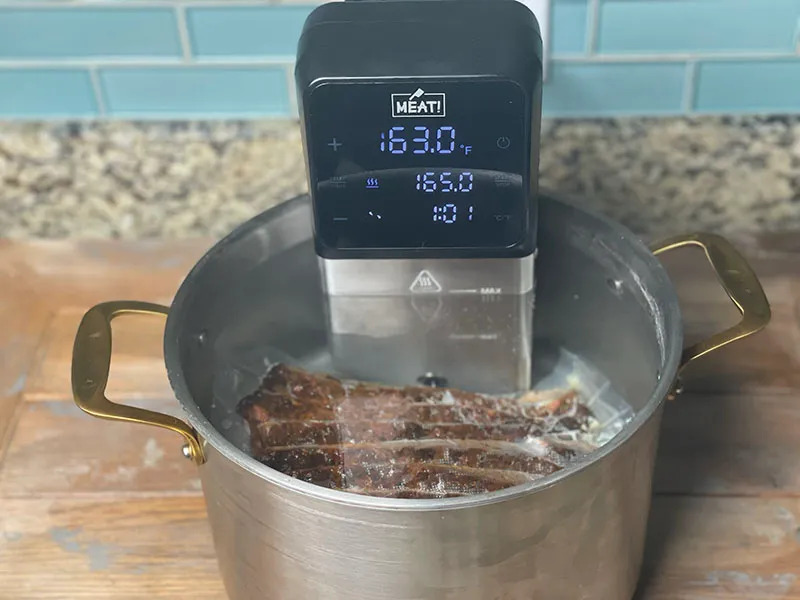
Large Meal Prep
You can cook big batches of food ahead of time, and then when ready to serve, you can just reheat the meat quickly before searing it. This way, you’ll always have perfectly cooked meat on hand, and you won’t have to worry about last-minute meal prep.
Safe
Reheating food using sous vide is a safer method than other methods, such as stovetop reheating. This is because you are less likely to overcook the food or dry it out, which can lead to bacteria growth.
Convenience
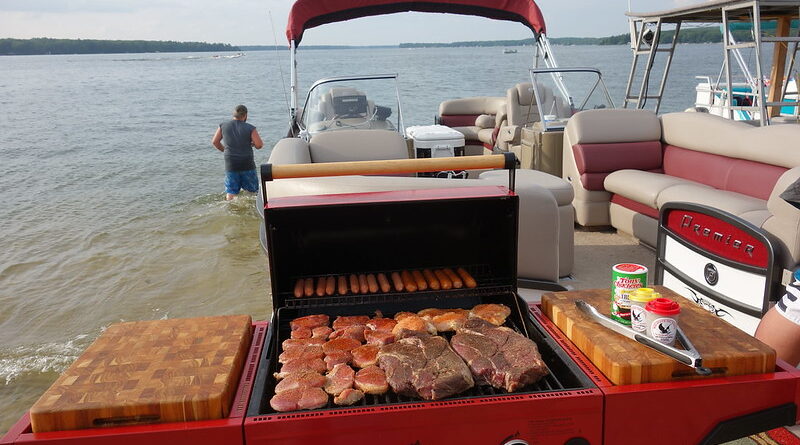
Imagine sitting by the lake with your closest family and friends, enjoying a camping trip or a ride on your pontoon boat. The smell of the crisp air mixed with the delicious aroma of perfectly grilled food fills your senses, inviting you to indulge in a satisfying meal. But what if I told you that you could have the same experience while also ensuring that the food you eat is healthy and cooked to perfection? Introducing sous vide reheating – the ultimate solution for achieving restaurant-quality meals at home, even when you’re out in the wilderness. By freezing food and reheating it using sous vide technology, you can guarantee that every bite is cooked evenly and has the perfect texture. So, gather your loved ones and get ready to elevate your grilling game to new heights with this innovative and healthy approach to cooking.
Perfection
Sous vide reheated food will also be more evenly cooked than food reheated using other methods. This is because the slow-cooking process ensures that the heat is distributed evenly throughout the food. As a result, you’ll end up with perfectly cooked meat every time.
How To Re-Heat Food With Sous Vide
Sous vide is a method of cooking food in which it is sealed in airtight plastic bags and then placed in a water bath or in a temperature-controlled steam environment for longer than normal cooking times at an accurately regulated temperature. The intent is to cook the food evenly, ensuring that the inside is properly cooked without overcooking the outside, and to retain moisture.
There are many ways to reheat foods using the sous vide method, but my preferred approach is to heat leftovers in the water bath to a temperature just below the original cooking temperature. The cooking time is usually the same or slightly less. Meat thickness determines cooking time. For safety, we’re presuming over 130 degrees Fahrenheit. A 1-inch steak reheats in 1-2 hours. This method preserves the food’s moisture and flavor, and doesn’t require any additional seasoning. Try it out the next time you have leftovers – you won’t be disappointed!
Re-heating Temperature For Sous Vide
When reheating your food using the sous vide method, it is important to again cook at a temperature just below the original cooking temperature. This will help to avoid overcooking your food and ruining all your hard work! If you originally intended to cook the food for a longer period of time because it wasn’t quite done, this rule wouldn’t apply. In that case, go ahead and set the temperature to what you originally intended and cook until it reaches the level of doneness you are aiming for. Reheating your food has never been so easy (or delicious)!
Re-Heating Temperature Chart
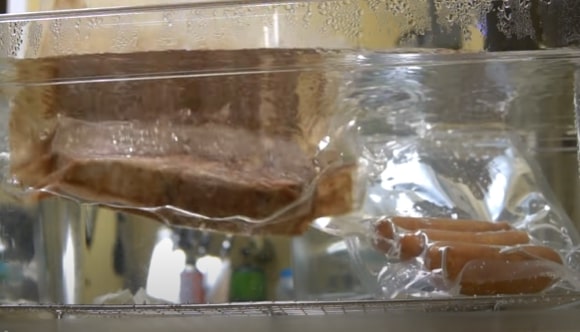
We all want to save time and money in the kitchen, and sous vide cooking is the perfect way to do it. With sous vide, you can cook your steaks or other proteins in advance and keep them in vacuum sealed bags in the freezer until you’re ready to eat. When it’s time to enjoy your meal, all you need to do is reheat the meat using the sous vide method, which takes only 30-60 minutes. And once it’s heated, you can sear or grill to perfection and serve up a delicious, juicy meal. Whether you’re meal prepping or cooking for a large group, sous vide re-heating makes it easier and more affordable than ever to enjoy your favorite cuts of meat whenever you want. Say goodbye to expensive restaurant meals and hello to perfect, tender steaks from your own kitchen – thanks to sous vide!
| FOOD | TEMPERATURE | TIME |
| Steak – 1 Inch | Temperature it was cooked | 30-60 Minutes |
| Steak – 2 Inch | Temperature it was cooked | 60-90 Minutes |
| Fish | Just Under Cooking Temperature | 20-30 Minutes |
| Soups, Stews Etc | 150 Degrees | 30 Minutes |
Cooking Frozen Uncooked Food Using Sous Vide
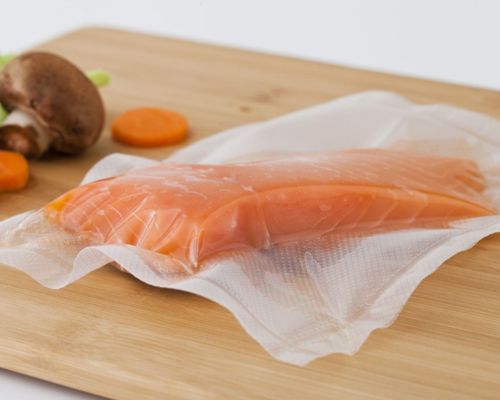
Sous vide cooking makes delicious, tender, perfectly cooked food. It’s easy to create, doesn’t take much effort, and is becoming a favorite among chefs and home cooks. What if you forgot to take the chicken (or steak) out of the freezer before making dinner? Fear not! A sous vide system lets you cook frozen meals well.
Cooking frozen sous vide meals at home makes delightful, healthful dinners for your family. Bulk meat, seafood, fish, and poultry purchases, especially on sale, save money. It reduces restaurant costs. Why eat out when you can cook?
To cook frozen meats using a sous vide system, you must know a few things.
Correct packing matters
Many people are hesitant to cook frozen food because they fear it will be dry or tough. However, if you use the proper cooking methods, you can achieve perfectly tender and juicy results. One popular method is sous vide, which involves cooking food in a water bath. When using this method, it is important to choose the right packaging for your food.
Absorbent pads, foam trays, and moisture-removing packs can cause the food to dry out, so it is best to avoid them. Instead, opt for a heavy-duty bag that will not tear during cooking or storing. If you have any doubts, repackage the meat in a sous vide vacuum-seal bag, freezer-safe zip-top bag, or water displacement method. By taking these precautions, you can ensure that your food will be cooked to perfection.
How To Calculate Time
When it comes to sous vide cooking, there are a few things to keep in mind. First of all, frozen food cook times are simple. You can either divide the recommended cooking time for fresh protein by two and add the original cooking time to the result, or multiply the fresh food’s cook time by 1.5. Both methods will yield the same results. Secondly, always make sure to preheat your water bath before adding the food. This will help ensure that the food cooks evenly. Lastly, don’t forget to season your food before cooking! This will help to intensify the flavor and make your meal even more delicious. By following these simple tips, you’ll be able to perfectly cook frozen food using sous vide every time.
Is It safe to cook frozen meats using sous vide ?
It’s a common belief that frozen meat is lower quality and less flavorsome than fresh meat. However, there are some benefits to freezing meat. For example, it can help to extend its shelf life and make it easier to cook. Frozen meat is also less likely to harbor harmful bacteria. This is because the cold temperatures prevent the bacteria from multiplying. As long as meat is cooked and kept at the right temperature, it is safe to eat. In fact, pre-searing the meat before sous vide cooking will reduce harmful germs and keep meals tasting good. So, there’s no need to worry about thawing your steak before cooking it sous vide. The less time the meat spends defrosting, the better!
Advantage Of Sous Vide Technique For Cooking Frozen Steak
No Down Time For Thawing
It saves time! Pull it out of the freezer, plop it in your sous vide bath, set the temperature and timing, and go!
Easy Batch Prep
Batch prepping frozen steaks is a great way to make sure you have a delicious, healthy meal on hand whenever you need it. And with sous vide, it’s easier than ever! Simply seal your steaks in a vacuum bag, submerge in water, and cook for hours before eating and freeze them. Whether you’re looking for a quick lunch or a hearty dinner, re-heat them. Batch prepping frozen steaks is a great way to make sure you always have something delicious on hand. So why not give it a try today? You’ll be glad you did!
Saves Money
Can buy in bulk at Costco, Sam’s Club, or Crowd Cow to save money. With an immersion circulator, you can buy in bulk and freeze steak to cook later without thawing. Can also buy other meats like chicken and pork in bulk and save even more money. If you’re looking to cook a steak dinner for two, buying in bulk can be a great way to save money. Plus, cooking with an immersion circulator means that you don’t have to worry about thawing the meat before cooking, so you can keep it stored in the freezer for when you’re ready to cook. Whether you’re feeding a family or just yourself, buying in bulk can be a great way to save money on your next steak dinner.
Saves Time
Have you ever wished you could have a perfectly cooked steak without having to do any work? Well, now you can with sous vide! Sous vide is a method of cooking food in a water bath at a very precise temperature. This means that your food will be cooked evenly throughout and it will be highly unlikely that you’ll overcook it. Plus, the Convenience factor of sous vide cannot be overstated. You can simply set your food in the water bath and let it cook while you do something else. No monitoring or babysitting required! So if you’re looking for a convenient and delicious way to cook your steak, sous vide is the way to go.
Types Of Steaks You Can Sous Vide
A lot of people don’t know this, but you can cook any type of steak using the sous vide method! Whether you’re looking for a juicy ribeye, delicious sirloin, or mouth-watering fillet mignon, cooking your steak sous vide is the way to go. Not only does it provide consistent results, but it also helps to lock in all the flavor and juices. Plus, it’s really easy to do! Simply vacuum seal your steak (one at a time) and freeze flat.
When you’re ready to cook, simply place the steak in a water bath and let it cook until it reaches the desired temperature. That’s it! You’ll have a perfectly cooked steak that’s sure to impress your guests. So next time you’re planning a dinner party, keep this little tip in mind – you can thank me later!
Different Frozen Foods We Can Sous Vide
Sous vide is a great way to cook chicken, pork, and steak. But did you know that you can also cook other frozen foods in a sous vide machine? That’s right! You can use sous vide to cook almost any kind of frozen meat, like chicken breasts or pork, as well as vegetables like potatoes, carrots, and more. You can cook these things in a sous vide machine right from the freezer to save time. Best of all, it won’t change how things turn out in the end. All you need is a sous vide cooker and a sous vide container to make this happen. People who like to meal plan often use frozen sous vide.
Meats like chicken and salmon can be cooked weeks ahead of time and put in the freezer. This makes meal planning even easier. If you try cooking frozen food in a sous vide machine just once, you’ll probably be hooked. Before you know it, you’ll be putting steaks and other frozen foods from your freezer in your sous vide water bath all the time.
Instead of slaving over a hot stove or grill, why not let a sous vide machine do all the work for you? With sous vide, you can cook meat, poultry, fish, and vegetables to perfection with minimal effort. And because sous vide cooking is so forgiving, it’s practically impossible to overcook food. So whether you’re a novice cook or a seasoned pro, sous vide is definitely worth trying!
How to Freeze Steak
Trim Fat On Steak
When trimming the fat on a steak, it’s important to not cut into the meat. The best way to do this is by cutting the strip of fat down to 1/4 inch or less. It’s also helpful to make sure that the fat is all the same thickness. This will help ensure that the steak cooks evenly.
Season The Steak
When it comes to seasonings, steak is best with salt. This is because salt helps to tenderize the meat. However, if you are going to freeze your steak, it is best to season it before freezing. This is because the seasoning will press into the meat and end up in the fluids. As a result, the sous vide process is more flavorful than other methods. When it comes to seasonings, there are no rules. You can use any flavor you like. For a bold steak supper, try using thyme, rosemary, garlic, and peppercorn. These seasonings will give your steak a distinctive flavor that will make your mouth water.
Vacuum Seal The Bag
If you’ve ever had freezer burn, you know that it’s not a fun experience. Not only does it make your food taste bad, but it can also be a major waste of money. Fortunately, there is a simple way to prevent freezer burn: vacuum seal the bag. Vacuum sealing removes all the air from the bag, which prevents ice crystals from forming and ruining your food. Plus, it keeps your food fresh for longer, so you can enjoy it at its best. To vacuum seal a bag, simply use a Ziploc or Stasher bag. After adding the proper amount of food, lower the bag into the water to push the air out and close it. That’s it! You’ve just vacuum sealed the bag and prevented freezer burn. And if you’re really looking to avoid freezer burn, add a few drops of cooking oil to the bag before sealing it. This will help create an airtight seal and further prevent ice crystals from forming. So next time you’re packing up your freezer, remember to seal the bag before freezing. It’s the best way to prevent freezer burn and keep your food tasting fresh.
Lay The Steak Flat
When you freeze your steaks, make sure to lay them out flat on a tray. This is the last but most important step. Because of this, you won’t have to worry about serving a steak that has been crinkled up, and the flesh will cook uniformly as a result.
How to Sous Vide Frozen Steaks (Uncooked)
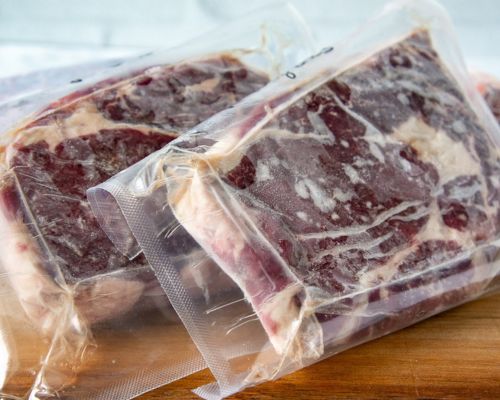
Prepare Sous Vide Machine
When you are ready to cook your steak using the sous vide method, remove the steak from the freezer and prepare your sous vide machine as well as the container to hold the water.
Sous Vide Time And Temperature For Steak
Below is meant for steaks up to 2.5 inches thick. More time will be required for thicker steaks. Lesser time for thinner steaks.
| TARGET DONENESS | TEMP RANGE | COOK TIME |
| Very rare to rare + | 120°F (49°C) to 129°F (54°C) | 2 – 3.5 hours |
| Medium-rare | 130°F (54°C) to 135°F (57°C) | 2 – 5 hours |
| Medium | 136°F (57°C) to 142°F (61°C) | 2 – 5 hours |
| Medium-well | 143°F (61°C) to 155°F (68°C) | 2 – 5 hours |
| Well done | 156°F (69°C) + | 2 – 4 hours |
Sear To Finish
If you’re looking for the perfect sear on your sous vide steak, follow these steps. First, dry the meat thoroughly by patting it with a paper towel. This will help the steak to brown more evenly.
Next, season the meat generously with salt and pepper (or your favorite seasoning blend).
Then, heat a pan over high heat until it is smoking hot. Add a little oil to the pan, then carefully place the steak in the pan. Sear for 30 seconds to 1 minute per side, or until you have a nice brown crust. Remove the steak from the pan and enjoy!
It is simple to forget the initial step, but remembering to do so is essential. The Maillard reaction, which is necessary to form a crust, won’t take place if you don’t pat the meat dry before cooking it. The meat is given flavor and the ability to produce a crust when it is seasoned. In the final step, a very high heat is used to make the crust.
Three Ways To Sear Steak
If you’re looking for the perfect Sear for your steak, look no further! Here are 3 ways to sear steak for sous vide:
1. Pan searing, preferably using cast iron. This will give you a nice even Sear all around the steak.
2. Grilling. This will give you a nice charred flavor on the outside of the steak.
3. Using a searing torch. This will give you a nice deep Sear on the outside of the steak. Whichever method you choose, make sure to Sear your steak for sous vide at a high temperature to get that perfect sear!
Searing Time
As any fan of steak knows, searing is an essential part of the cooking process. Searing helps to lock in the juices, giving the steak a delicious crust. But how long should you sear for? The answer may surprise you. While it’s important to sear for 1-2 minutes per side, it’s better to sear quickly than slowly. The key is to heat the pan until it’s nice and hot, then add the steak and sear for 2 minutes per side. This will help to prevent the steak from overcooking. And if you’re looking for extra colour and texture, you can always sear the steak twice (or more) for 30 seconds to a minute on each side. Just be sure not to overcook the steak!
Freezing Fully Cooked Steak After Sous Vide
Freezing sous vide cooked steak is a great way to meal plan. The faster the meat cools down and freezes, the higher quality the meat will be. That’s why it’s important to give it an ice bath after sous vide and before putting it in the freezer. This will help keep the steak juicy and delicious. So next time you’re meal planning, don’t forget to sous vide your steak and then freeze it for an easy and delicious meal.
Can We Sous Vide In Store Packaging?
One of the key components of sous vide cooking is the bag. Steaks should be cooked in a high quality sealed bag made of high-quality BPA-free polyethylene, polypropylene or silicone. When unsure, you should always repackage your steak in a proper sous vide bag. This will help to ensure that your steak is cooked evenly and correctly. By using the right type of bag, you can avoid any potential problems and ensure that your steak comes out perfectly and safe to eat every time.
